Summer Highs in Innsbruck, Where the Alps Are for All
This website uses affiliate links which may earn a commission at no additional cost to you. As an Amazon Associate I earn from qualifying purchases.
Updated: 4th June 2024
My visit to Austria was supported by Austria Tourism
I push my finger against the slightly steamy bus window, tracing saw-toothed mountains meeting a star-lit sky. On any other evening, the darkness would make these extremes indistinguishable. But tonight, flickers of pumpkin-hued flames acted as my guide.
For one evening every June, Tyrol resuscitates its centuries-old tradition of Kreidfeuer – chalk fires atop the Eastern Alps. Shapes of falcons, crosses and other emblems blaze bright across the valley, celebrating the arrival of midsummer rather than their former warning of adversaries. Like beacons on a runway, they ushered us onwards – mountain markers leading from the still countryside to city sprawl.
Stepping down from the coach, I shake off the striking yet long journey through Switzerland’s vines, lakes, and now oil lanterns. Midnight had already passed, and the solstice loomed ever closer. Somewhere above the city, hidden away in Austria’s Nordkette range, bonfires would still be searing, and steins overflowing.
By daybreak, the scent of smoke would be long gone, and Innsbruck’s summer would slip in at first light.
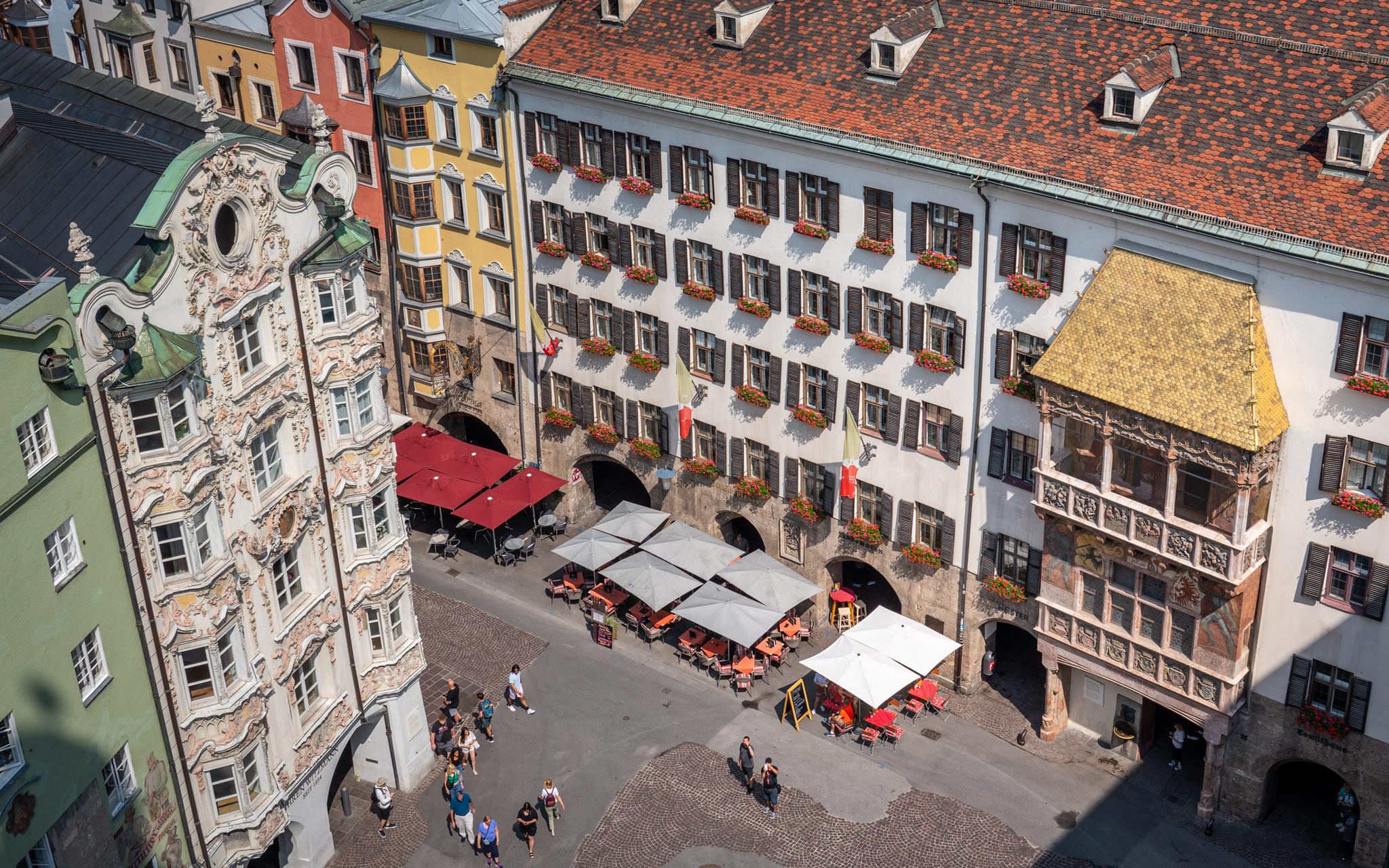
Terraces and towers
If the Stadtturm were to be the lowest of the summer highs I’d experience in Innsbruck, I knew the city was establishing up some seriously elevated expectations.
From the City’s Tower, a 51-metre tall 1450s structure, a true 360-degree pop-up book panorama encircled me – the city’s highlights all seemingly close enough to reach out and touch. Shimmering below, the Goldenes Dachl – a landmark fresco-adorned fantasy topped with copper-gilded tiles – dominates a small square. Across the cobbles, the ornate facade of the Baroque Helblinghaus tries to compete for my attention.
Behind, the green-domed copper roofs of the Imperial Palace accidentally blend in with the verdant mountain slope, while Maria-Theresien-Straße – named after the archduchess who adored this Austrian city – snakes in the opposite direction. From the Town Square, with its grand, pastel-hued buildings, to the Triumphal Arch, Maria’s Rome-inspired marble-clad memorial, this avenue forms the artery of the Altstadt. Beyond, the hill-topping Bergisel stands tall, a year-round reminder of Innsbruck’s sporting pulse.
But my eyes can’t stay focused on the ground level for long, and the ever presence of the peaks pulls them upwards. Innsbruck isn’t a city in the mountains; rather, the mountains are in the city. Wherever you are, you feel cocooned and humbled by their soaring faces. I close my eyes and imagine the city coated in winter snow, seeing a caricature of a Christmas card. When I open them, summer comes firmly back into view; there’s little more than a sprinkling of icing sugar atop the jagged giants today.
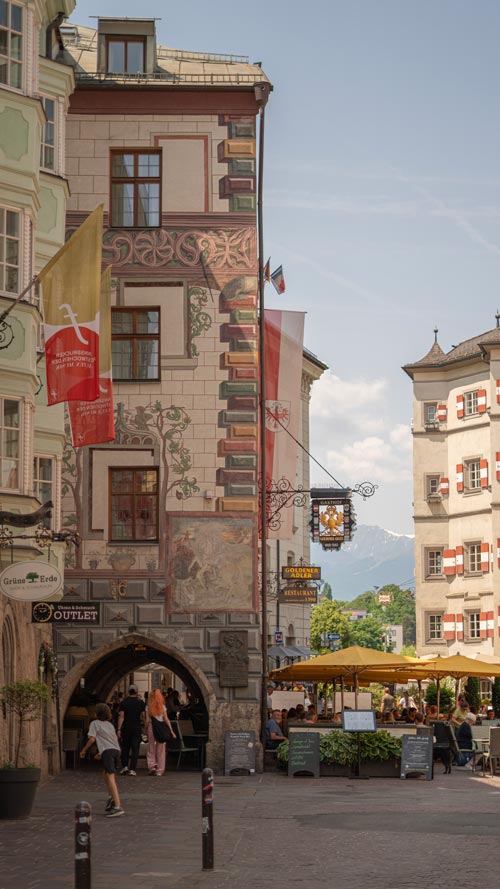
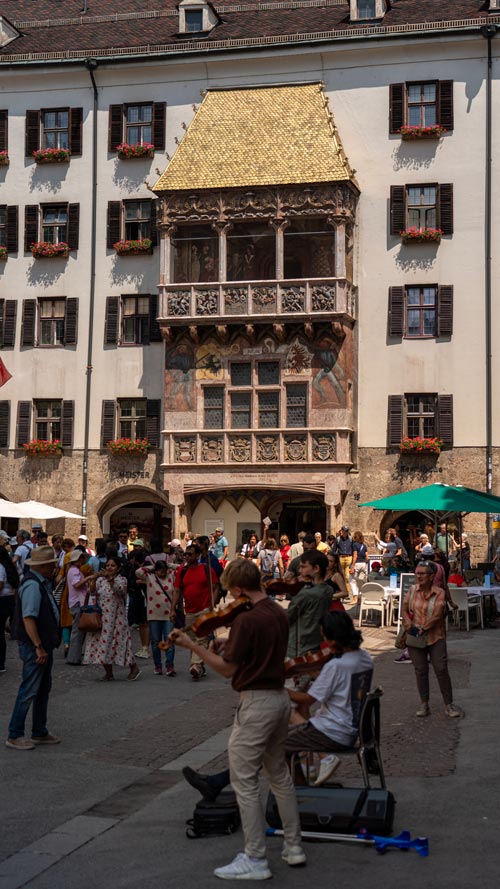
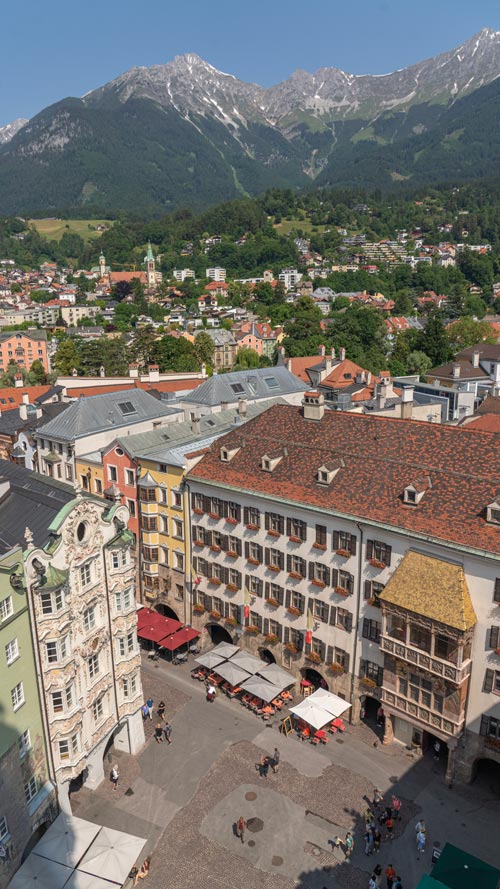
Taking my cue from the call of the church bells – there had been no need to rise early on the longest day of the year – I searched for a typical Tyrolean lunch. The sun might not lend itself to hearty winter dishes, but a traditional Gröstl (diced potatoes and meat topped with an egg) would perfectly accompany the first beer of summer.
With Sunday afternoon sunlight coating the streets, the terraces overflowed with plates, pints and people; postcard-perfect timber-beamed cafes were serving up serious ice cream; and locals clad in their breeziest of summer attire linger around the main town square soaking it all up. That’s not to say the city was crowded – Innsbruck’s main season is during the winter ski months – but merely making the most of these sunshine-soaked high spirits.
Slipping into my temporary home, the Stage 12 Hotel, and ignoring the temptation of the top-floor sauna, I grabbed a couple more layers. It might be summer in Innsbruck’s pretty side streets, but far above the city, a much wilder and almost winter-like landscape awaited.
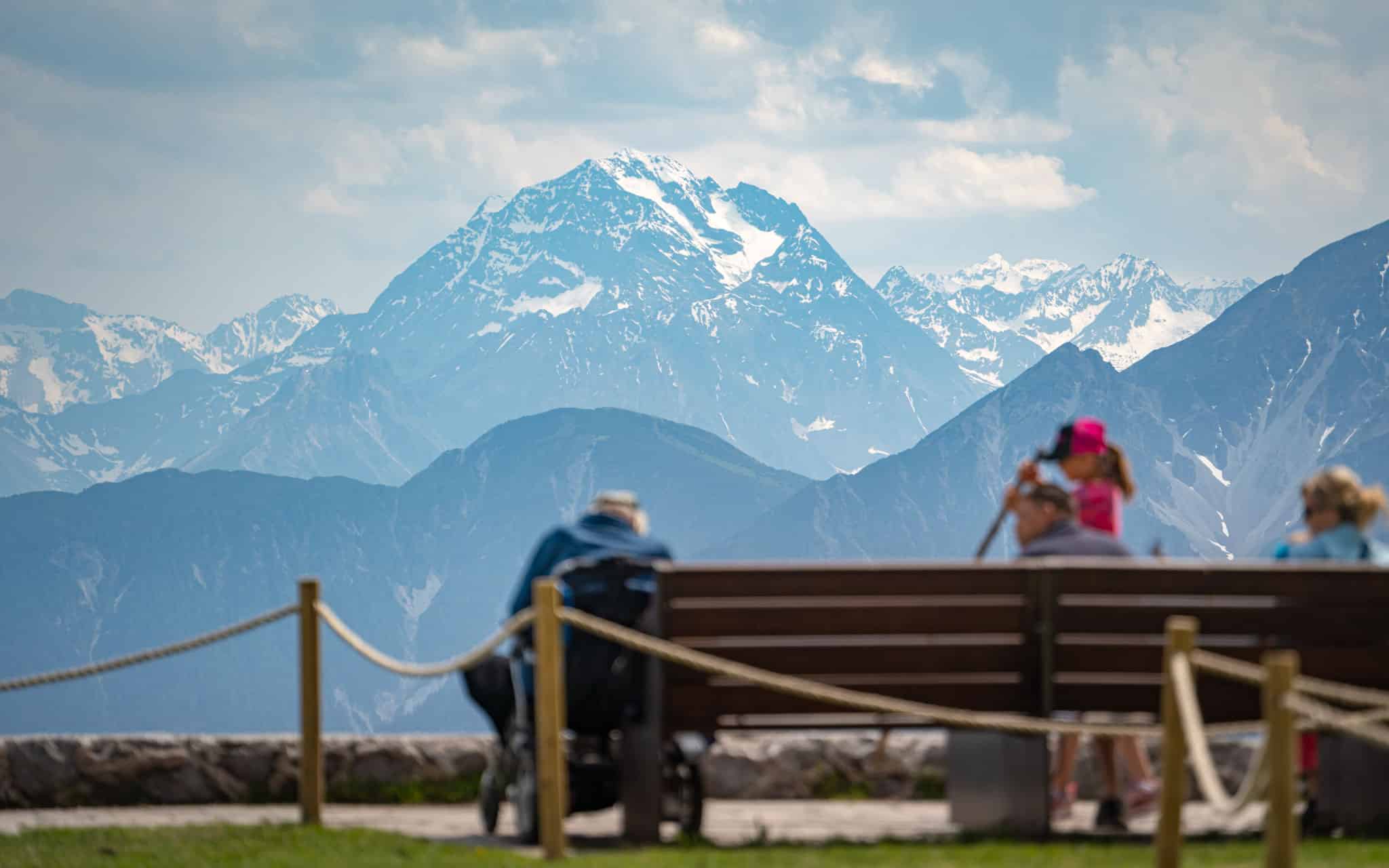
Alps open to all
Stepping off the Hungerburgbahn funicular at its namesake station, I was adamant I was in the wrong place. This all seemed to be far too easy.
From here, the promised peaks were just eight minutes away, courtesy of the Nordkettenbahnen cable car. Then, after a few moments more on a second lift, I would find the summit at Hafelekar. Ten minutes before, I’d been amongst city centre stores and churches, and in just ten more, I would apparently be approaching Innsbruck’s highest point – these Austrians don’t mess around with their mountain accessibility.
The first stop of any journey up the Nordkette (Northern Range) is the Seegrube station. Stepping out from the glass box, Innsbruck’s summer started to fade, a cooling breeze riding on the winds, as were the paragliders high above.
At the mountain restaurant, tables were in demand. Families, older folks, and out-of-breath climbers from the Via Ferrata were recharging with hearty plates, while those with just beers or Hugos – an elderflower and prosecco cocktail – sat around the final embers of last night’s fires. It seemed like everyone was there, and the cable car’s accessibility created an open-to-all atmosphere. The easy-to-amble Path of Perspectives, with its jutting-out platforms, provides a non-intense trail for those who don’t want to go any further.
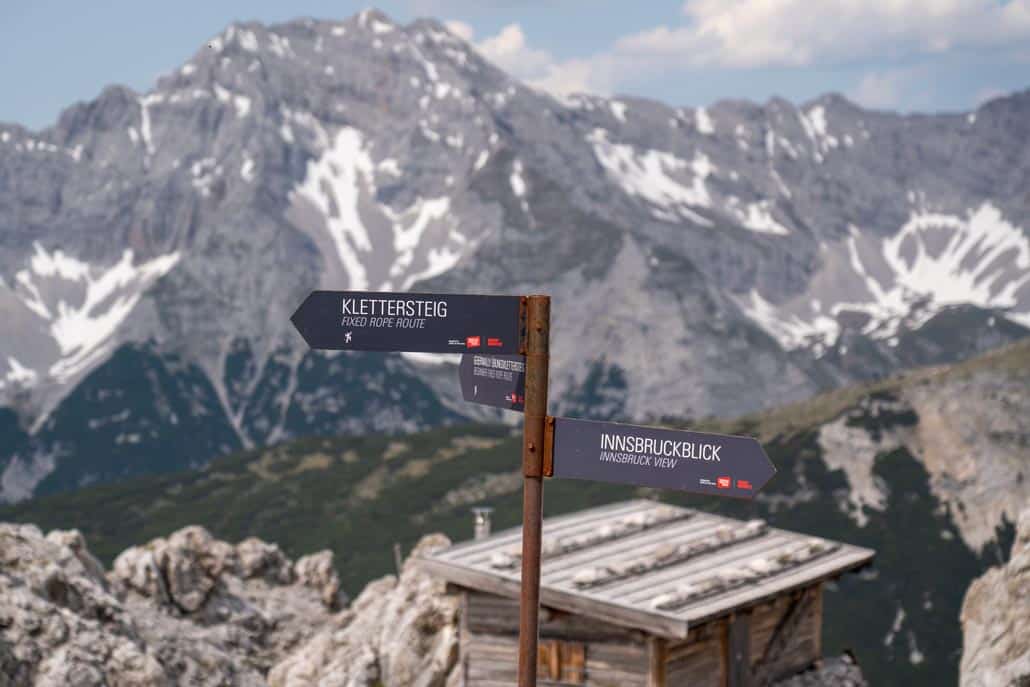
But I had my sights set on the summit, so I dutifully waited for the second car to the final station. It only took two minutes, but the temperature and landscape shifts were almost seismic.
Here, far above the city, it felt like the two faces of Innsbruck were having their standoff. In the distance, the mint-green River Inn cut through the Old Town’s core, a mere summer speck in the valley below. Behind me, the rugged Karwendel mountains, still in part wearing their snow coat, seemed to roar. This scene wasn’t winter, nor was it summer; it was simply one of the Eastern Alps’ ever-changing expressions.
To my right, a steep but short trail led to the Hafelekar Peak, the summit serving as Innsbruck’s highest point, an impressive 2,334 metres. To the left, another restaurant provided refuge, an ice-clad trail emerging around the corner.
This is the gateway to Austria’s largest natural park – no mean feat in a country renowned for being Mother Nature’s canvas – and hiking trails of every level are snuggled in all its conserved corners. But for those who simply want to pause and appreciate, this living Alpine artwork obliges.
Atop Innsbruck, I felt like these heights truly were for all.
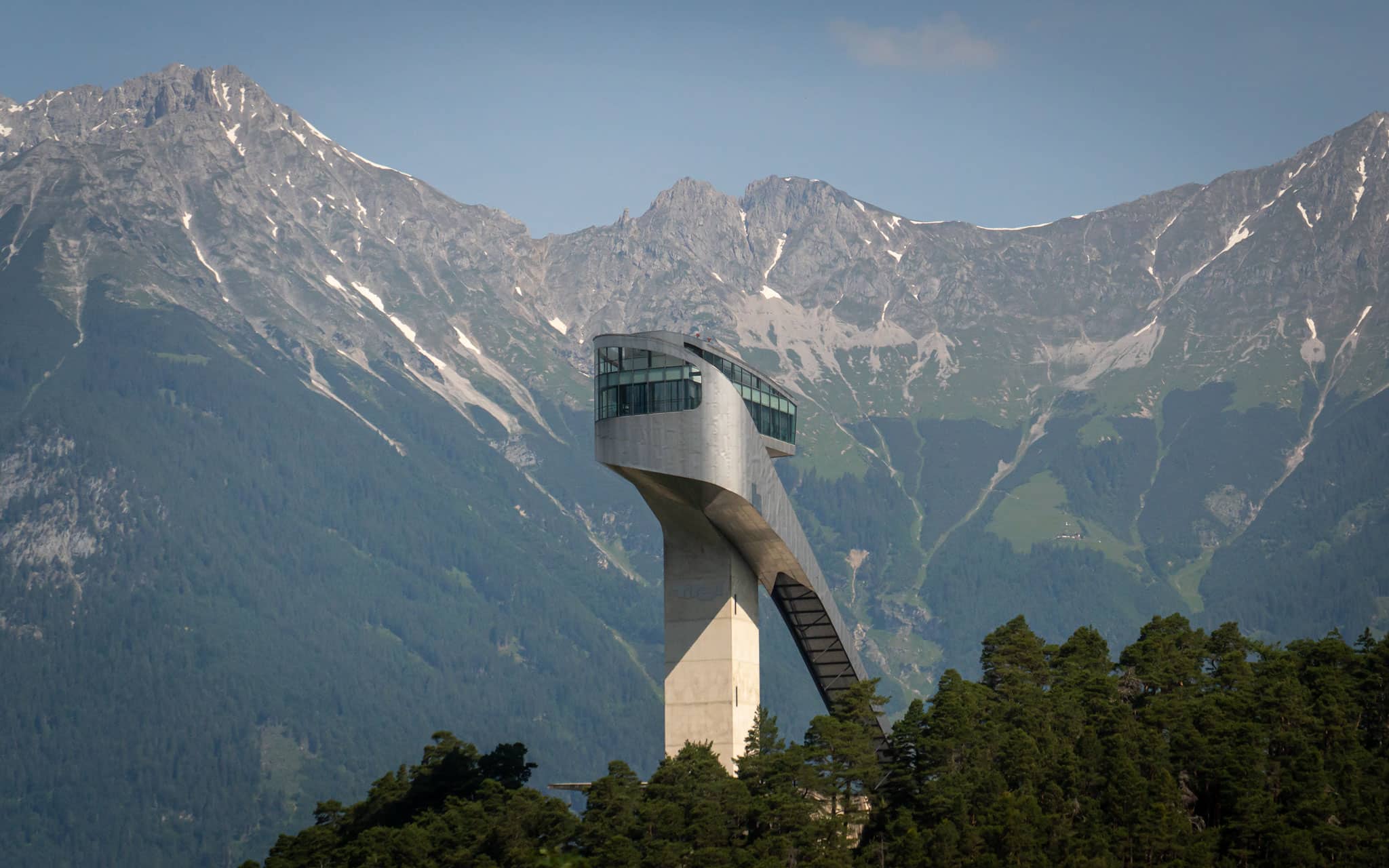
Year-round Alpine architecture
In my eagerness to enjoy Innsbruck’s crown, I’d paid little attention to the Alpine stations we’d crossed. The brainchild of the innovative Zaha Hadid, who took inspiration from local ice formations, the perfectly polished and curved roofs of the stations seemingly float, suspended against the backdrop of the leafy inclines.
Even the Hungerburgbahn itself is a nifty forte of design; the carriage’s varying heights as it slides up the slope are somewhat of a forward-thinking funicular design.
But the great late architect’s legacy isn’t restricted to transporting mountain goers. Her most famous Innsbruck design is the Bergisel.
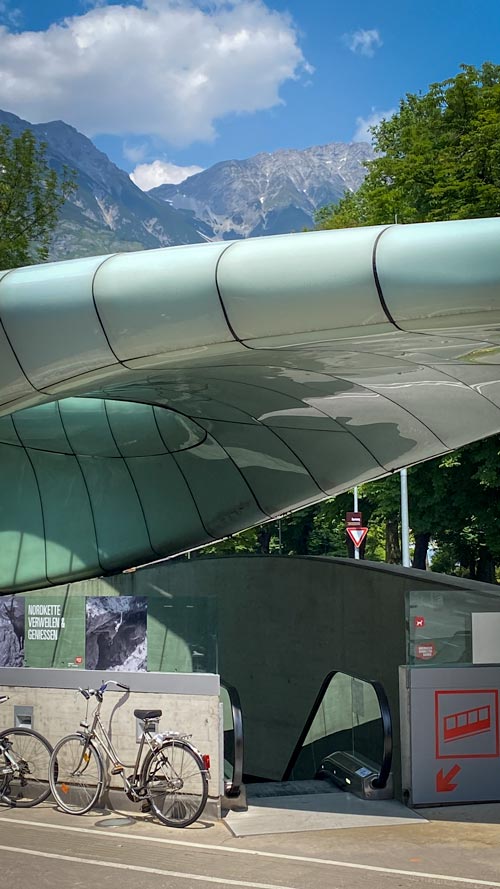
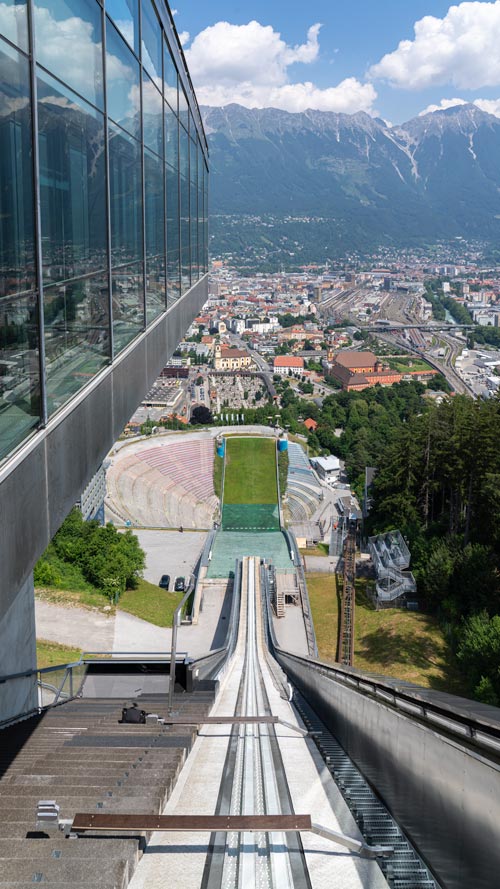
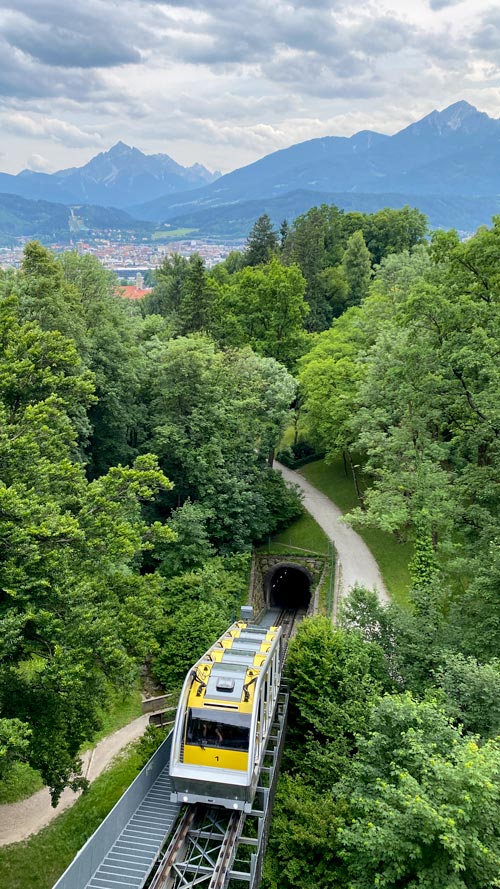
Set on the city’s outskirts, at the point where urban sprawl fades, and forests reclaim the story, this soaring tower is a testament to Innsbruck’s true love: skiing. So ingrained is the sport in the city’s psyche that Hadid dedicated herself to designing a tower that wasn’t just flawless in its presentation but also allowed an audience to appreciate the skills of daredevils from all angles.
The stadium, dating back to the 1930s, was part of the city long before being rebuilt for the 1964 Winter Olympics. Hadid’s ski jump came much later, but its legacy is equally timeless.
If you’re wondering how to get a taste of Innsbruck’s ski season in summer, this tower is your calling. Early morning or mid-afternoon, these adrenaline-chasing athletes will leave you in awe, either from the viewing platform or the cosy glass-fronted restaurant. With a sense of astonishment and a shot of espresso, I found myself pressed up against the glass once more, this time tracing the steep jumpers’ slope in disbelief.

Read More:
Year-round festivals in Salzburg

A ticket to the trails
The following morning, after a night of summer celebrations along the riverside—the pastel-hued townhouses of the Mariahilf District seemed to be the locals’ preferred backdrop for al fresco evenings—I was itching to be back amongst the mountains.
Today, my peak of choice was Patscherkofel, the little sister who stands across the valley from the Nordkette.
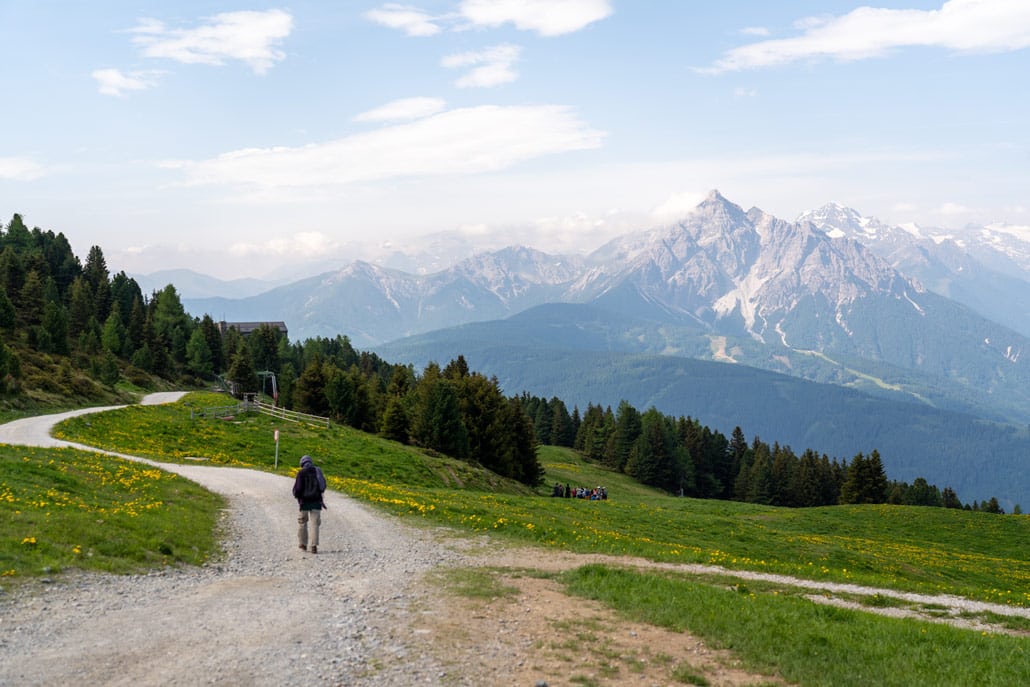
Flashing my Innsbruck card – the almost all-inclusive ticket to the city and Eastern Alps – to the bus driver, I set off for the included cable car. Passing through Igls, which I imagine is what I’d paint if tasked with depicting an Alpine village, the journey to the mountain’s base was as seamless and scenic as the ride to the top.
Once at 2,000 metres, my intention of tackling the trails ebbed away. Instead, I found introspection in the Alpine Botanical Garden and reflection on the restaurant’s terrace.
I was reminded of the lessons from my favourite hike in Austria, the Asitz Mountain, where the slopes had taught me Alpine health is as much about doing nothing as strapping on those hiking boots.

Read More:
Graz, Austria’s sustainable second city
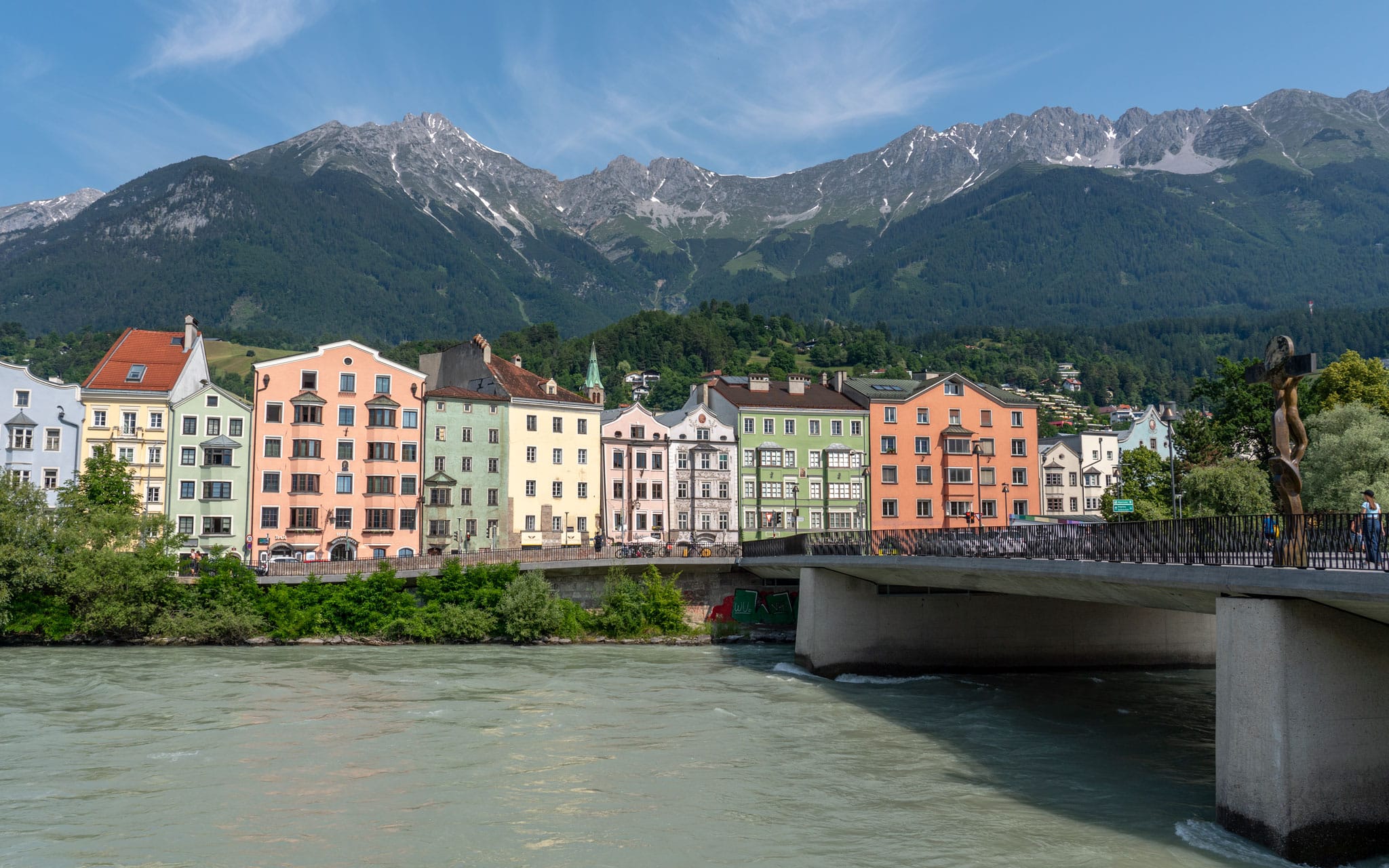
Midsummer museums
It’s hard to describe, but Innsbruck in summer just feels like a city made for hikers. Even some of the green crossing lights are embellished with backpack-wearing walkers.
Though, of course, it’s equally a cultured city break, and I honestly believe you could come here and just admire the mountains from afar, never setting foot on a slope, and still thoroughly enjoy your time.
Perhaps, museums and churches aren’t top of the list of things to do in Innsbruck on a sunny day, but like in the country’s other great cities – Vienna, Salzburg and Graz – it would be criminal to miss all of the nation’s classical heritage.

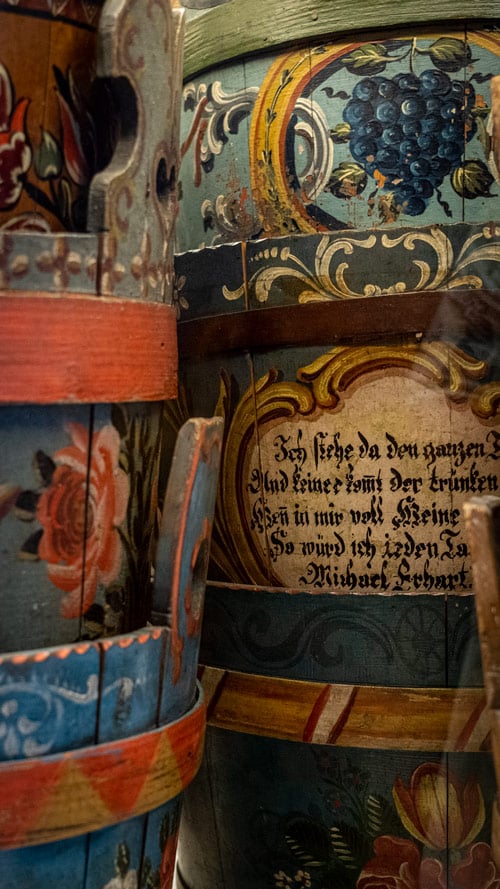
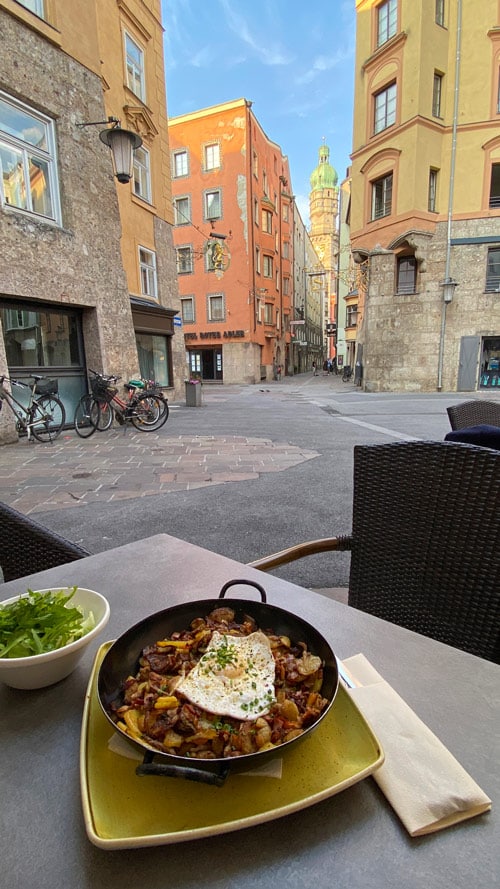
That’s how I spent my penultimate day in the city’s cultural attractions, hopping between the highlights, each filling in a little bit more of Innsbruck’s story.
Starting in the Hofburg, the Habsburg’s hulking palace in the city’s heart, I traced Innsbruck’s imperial routes. This may have been the residence of Emperor Maximillian, but it’s Maria Theresa’s stamp you mainly see today. Across the street, the 16th-century Hofkirche (Court Church) is equally imposing. Home to Emperor Maximilian’s tomb, statues of his family line the central nave.
But it was in the Tyrolean Folk Art Museum where I found the most answers, and it’s the space I’d deem most worthy of sacrificing a few inside hours of Innsbruck’s summer for. Across multiple floors, the region’s traditional clothes, toys, furniture, and ceramics are displayed, and the reconstructed rooms from typical Tyrolean homes tell the tales of bygone times.
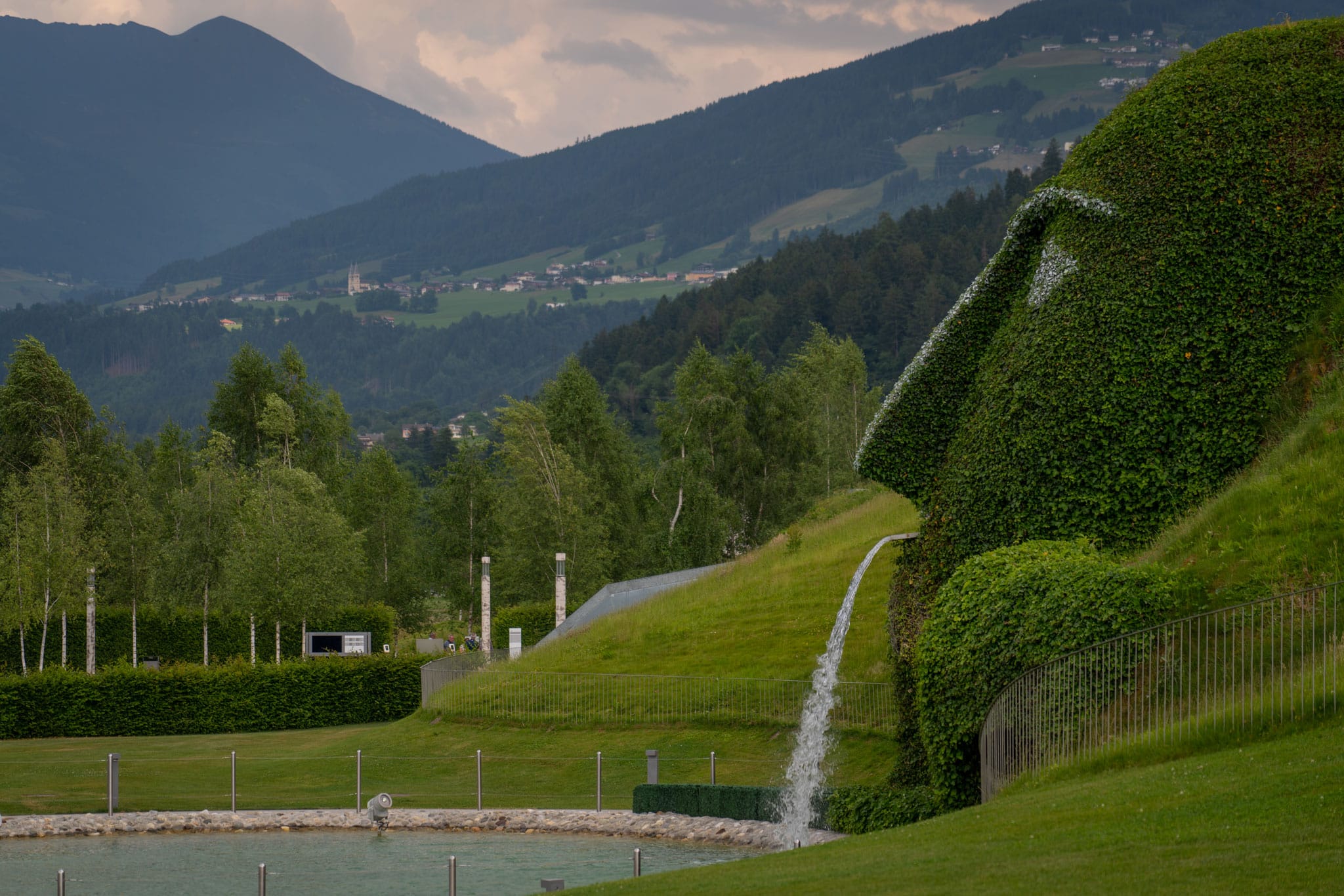
Tyrol’s summer tales continue
While my short but sweet summer holiday in Austria was soon to end, the highs certainly didn’t have to. My final day was a whirlwind of visits, stopping off at the medieval Old Town of Hall in Tirol, marvelling at the whimsical sight of Swarovski Kristallwelten, and touring the majestic Ambras Palace, where portrait galleries and grand halls convene.
By the time I boarded my onward train, I knew that Innsbruck in summer was indeed an underrated European city. With plenty more of Tyrol’s tales left unexplored – such as the turquoise fringes of Lake Achensee, the river-topping Kufstein Fortress, and Austria’s second-largest glacier, the Kaunertal – I also knew I’d be back for another summer sampling someday.

But the real story of summer in Innsbruck isn’t Emperors and Emeralds, nor how the city meets the mountains in a mere 30 minutes, but rather how these Alps are accessible and open to all.
Nowhere before have I witnessed such a spectrum of people – whether they be visiting with boots, buggy, walking stick or wheelchair – relishing the peaks.
Forget finger tracing from afar; there’s a figurative and literal high here that anyone can hold in their hand, one which will burn long after the Kreidfeuer’s last flames have extinguished.

Plan your trip:
How to spend a weekend in Innsbruck
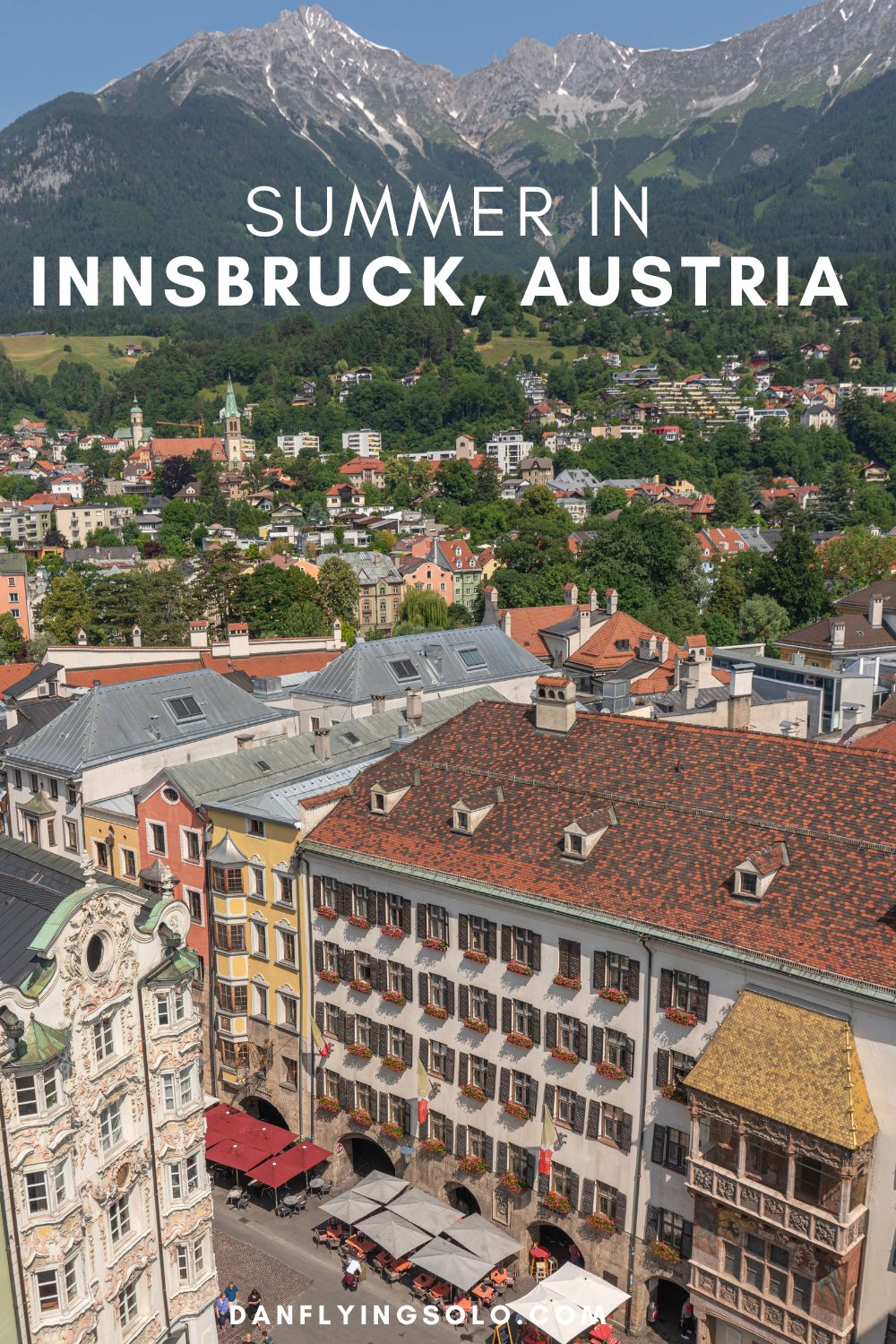




Leave a Reply
Want to join the discussion?Feel free to contribute!